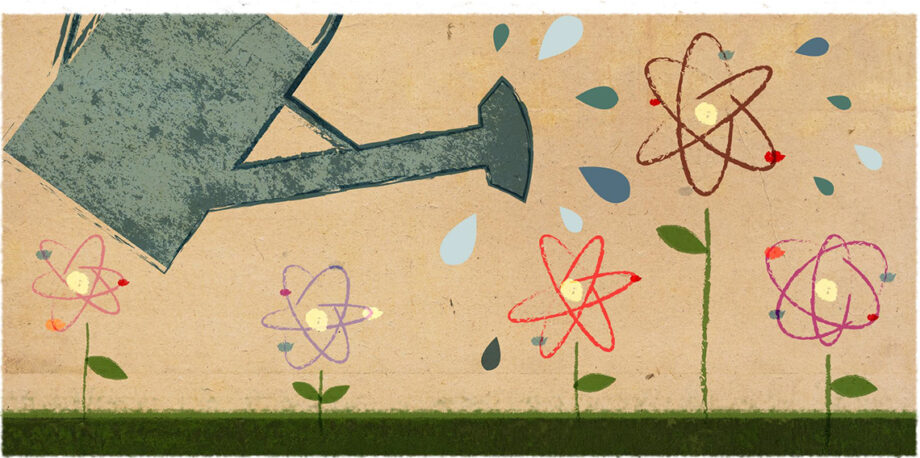January 8, 2016 —  When you look to the year ahead, what do you see? Ensia recently invited eight global thought leaders to share their vision for the environment as it relates to business, culture, ecosystems, energy, food, health, water and the world (see more). In this installment, Alex Trembath, senior analyst at The Breakthrough Institute, answers the question: “In 2016, what is the best way we can reduce energy’s carbon footprint?”
When you look to the year ahead, what do you see? Ensia recently invited eight global thought leaders to share their vision for the environment as it relates to business, culture, ecosystems, energy, food, health, water and the world (see more). In this installment, Alex Trembath, senior analyst at The Breakthrough Institute, answers the question: “In 2016, what is the best way we can reduce energy’s carbon footprint?”
In 2015, researchers from Sweden and Tasmania set out to determine the fastest route to a zero-carbon electricity system. In May, they published their findings in the journal PLOS ONE. It was no surprise to those of us who study energy transitions that, historically, nuclear power has proved the fastest way to decarbonize national electricity sectors.
Sweden and France set a high bar for quickest decarbonization. France went from a fossil-fueled power system to 80 percent low-carbon electricity, the bulk of this transition occurring between 1975 and 1990. Cases like these completely upend the notion that nuclear is too slow, expensive and complex to drive rapid and significant decarbonization.
But nuclear power has been on defense for the past few years due to post-Fukushima difficulties, public opposition and low natural gas prices in the United States. Several nuclear plants are on the verge of being prematurely shut down in the United States. Germany, Japan and Sweden have also all faced early shutdowns — leading to skyrocketing carbon emissions in Japan and a resurgence of coal power in Germany. What can be done to keep these plants open and, even more important, accelerate the expansion of nuclear power?
In the United States, we can start by introducing incentives for nuclear plants’ reliability and low pollution, as some states already do, in much the same way that states incentivize renewables through portfolio standards, tax incentives and “priority dispatch.” This will ensure that they run for several more decades. Beyond this, we can use our national laboratories as test beds for new, innovative reactor designs. Next-gen technologies like small modular designs, passively safe molten salt reactors and pebble-bed reactors all have the potential to scale after successful demonstrations.
If we really want a clean energy future for the whole planet, however, we have to look beyond U.S. borders. Energy demand is growing fastest in countries like China, India, Indonesia and South Africa — and where there’s demand, there’s innovation. Rich countries should partner with rapidly industrializing nations to design, demonstrate and deploy the low-carbon solutions — nuclear and otherwise — that will create a high-energy, low-carbon planet. ![]()
Editor’s note: The views expressed here are those of the author and not necessarily of Ensia. We present them to further discussion around important topics. We encourage you to respond with a comment below, following our commenting guidelines, which can be found here. In addition, you might consider submitting a Voices piece of your own. See Ensia’s “Contact” page for submission guidelines.
Ensia shares solutions-focused stories free of charge through our online magazine and partner media. That means audiences around the world have ready access to stories that can — and do — help them shape a better future. If you value our work, please show your support today.
Yes, I'll support Ensia!

To assume such "feats" could be easily recreated anywhere in the world is unrealistic. There might indeed be a future for nuclear power, but nowhere do the "thought leaders" (PR people for the nuclear power industry) even mention such pesky issues as siting, waste management, financing, safety or regulatory oversight.
Nuclear power is on the defensive for a variety of reasons that the BI and its "senior analysts" simply refuse to address. If you truly wish to campaign for nuclear power you'll need to make a more fulsome and intelligent argument. I'll not hold my breath.
At Danfoss, India technologies can help accelerate low carbon development.